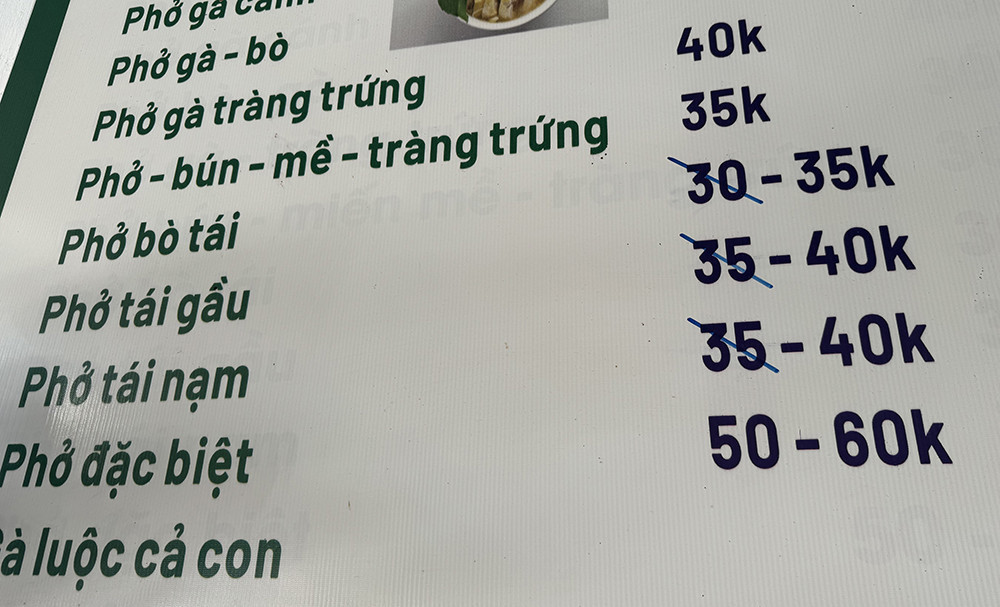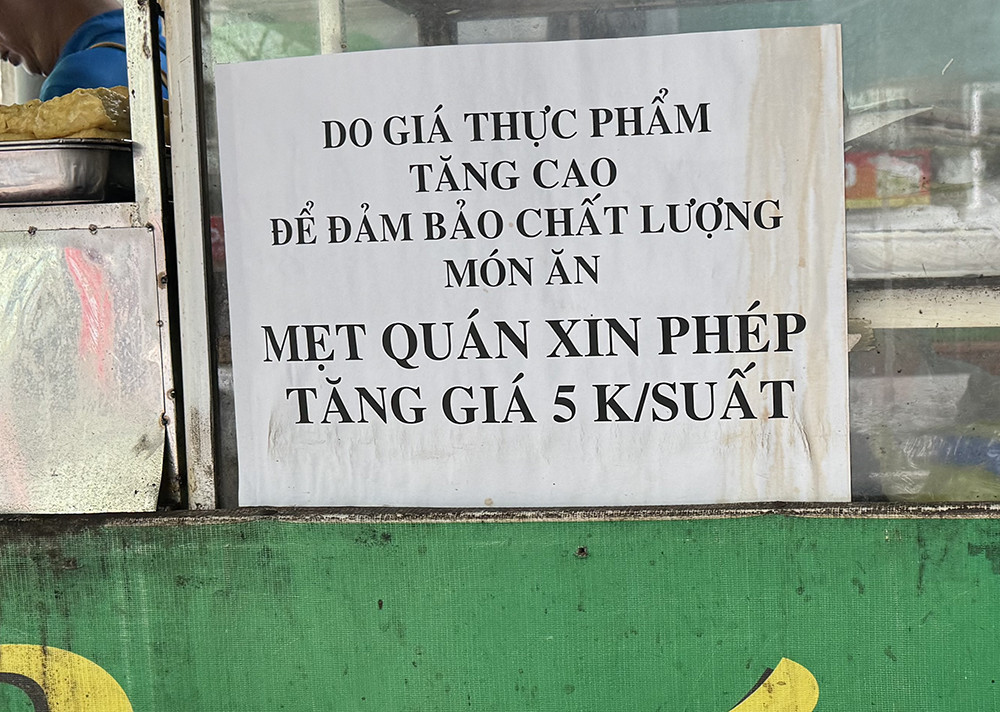At a noodle shop in Linh Dam (Hoang Mai District, Hanoi), the owner recently announced a price hike after maintaining the old rates for a long period. The increase was attributed to the rising cost of key ingredients such as meat, vegetables, cooking gas, and spices.
“We had no choice but to increase prices by VND 5,000 per serving. From the previous standard of VND 30,000 (USD 1.18), most items are now priced between VND 35,000 and VND 40,000 (USD 1.38 to USD 1.58),” the owner shared.
“Input prices have been climbing steadily since the beginning of the year. At VND 30,000, we could no longer cover our costs. Though we know it may affect customer turnout, we have to adjust prices to survive,” she added.

The cost of pork has risen by about 30–40% compared to last year, while beef is now 10% more expensive. Other essentials like cooking oil and pepper have also seen continuous price hikes.
Not far away, a pho shop has also put up a sign announcing its new prices. According to the owner, bowls of pho that previously cost VND 35,000 (USD 1.38) now start at VND 40,000 (USD 1.58).
The owner said prices for beef, soup bones, and herbs have surged. Beef alone has increased by 10–15% since the end of last year. Combined with rising transportation, electricity, and water costs, these increases forced eateries to adjust their menus to avoid operating at a loss.
At a pho shop in Tay Mo (Hoai Duc District), prices for dishes such as rare beef pho and beef brisket pho have been raised by VND 5,000, now priced at VND 40,000 (USD 1.58) per bowl. Staff said the hike was necessary to maintain profitability. The shop previously kept prices low because it was family-run and did not pay rent.
Rising prices have affected not only sellers but also consumer habits. Many diners say they are more cautious about eating out. “With prices going up, I try to eat out less. If I do, I order smaller portions,” said office worker Hung.

In addition to ingredient costs, rent is a heavy burden for many food vendors, especially in central Hanoi. Some small eateries are considering further price hikes or downsizing to cope.
The Linh Dam shop owner revealed she pays VND 30 million (USD 1,185) per month for a space of just over 30 square meters. “Linh Dam is densely populated, and landlords assume business is booming. They frequently demand rent hikes. In truth, we’re struggling to survive. We’re doing everything we can not to raise prices while maintaining food quality. But revenue is falling as customers tighten their spending,” she said.
Tuan, who runs a small restaurant in Thanh Xuan District, echoed her concerns: “I spend tens of millions of dong each month just on rent, not to mention electricity, water, and staff wages. If I don’t raise prices, I won’t make it.”
Many owners said that if rents continue to rise, they’ll be forced to increase prices by another VND 5,000 to VND 10,000 (USD 0.20 to USD 0.40) per dish in the near future.
Amid these challenges, some eateries are finding ways to adapt. A few have begun selling desserts and drinks to increase revenue and encourage return visits. Others are ramping up online delivery through food apps to reach office workers and remote employees.
Some restaurants have chosen to share their spaces with other vendors or open new branches in areas with lower rent.
Huong, a vendor in Hoang Mai District, shared: “I used to rent a space all day to sell noodles. Now I’ve partnered with someone who sells spicy noodles in the evening. It brings in extra income and reduces the rental burden.”
Duy Anh